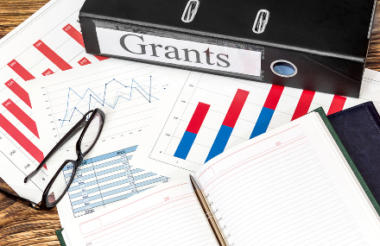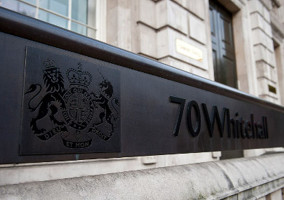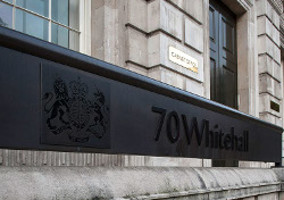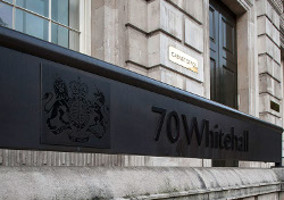Kirsty Weakley takes a closer look at the government’s latest grants register and asks whether it is up scratch.
Last month the government finally published data from its new Government Grant Information Service.
This is a new intiative which the government promised to establish after the collapse of Kids Company, to make it easier to understand where government is giving grant funding. It is intended to make government more transparent and improve the efficiency and effectiveness for government grantmaking.
The data on the new register actually turns out to be remarkably similar to data which was already available, and which we've previously analysed.
I’ve written before about how the grant register is difficult to use and unhelpful in understanding how much money different departments give to which types of organisation. So in the 18 months since it last published any data on government grants how much progress has been made?
This time it published both a full register for the whole of government, and more detailed information for the Department for Transport and the Ministry of Justice, using the standard format developed by 360Giving - a charity which aims to improve transparency in grant-giving.
Following the Kids Company debacle there was agreement that creating of a uniform register of government grants would enable greater transparency and efficiency.
Unfortunately there are a number of issues with the publication which mean that it is not as useful as some might have hoped.
It is not the first time that the government has published data on government grants. For the financial years 2013/14 and 2014/15 the Cabinet Office published a spreadsheet with grant information from across the whole of government, although it appeared that nearly every department had provided data in a different way, making it confusing and unwieldly.
Too many gaps
The full register published last week is not much better than it was before. There does appear to have been some standardisation in terms of how grants have been classified, with fewer types of recipient sector.
While some departments, like the Department for Digital, Culture, Media and Sport have reported in detail about exactly who they have funded - and what type of organisation they are - others have not.
It is still impossible to say with any certainty how much the charity sector received in total from government because some departments report funding by scheme, rather than recipient. In a number of grant schemes there were recipients from across civil society and other sectors such as local government.
The total amount awarded from grant programmes where funding was given exclusively to civil society organisations was just over £6bn, out of a total of almost £100bn. For funding programmes where civil society was a part of the recipient sector, £7.9bn was awarded.
This is in line with the amount we were able to estimate charities received from government grants in our previous analyses, although the methodology has changed each year so it is impossible to make wholly accurate comparisons.
What can we find out?
Despite the issues outlined above, it is possible to extract some useful learnings by examining parts of it more closely.
For this part of the analysis I have just looked at those grant schemes where a civil society organisation was the sole recipient.
The register now specifies four categories of grants:
- Formula grant (funding provided using a formula to distribute cash evenly)
- General grant – competed
- General grant – criteria based
- General grants – uncompeted
This reveals that, actually, very little grant money was awarded on an uncompeted basis. Around £2.2bn was awarded on a competed basis.
Just £290m was given on a society organisations on an uncompeted basis, with £191m of this going to National Citizen Service. And only £71m was awarded via formula grants
The next largest uncompeted grant scheme was the £40m in Libor fines to armed forces causes from the Treasury.
Other large uncompeted grants include £8m to the Thalidomide Trust and £2.5m to Mind for the third year of the Time to Change programme. An examples of a smaller uncompeted grants include £201,000 to the NSPCC for its whistleblowing portal.
How much difference does the new format make?
This year the Department for Transport and Ministry of Justice have made their grants data available using the standard developed by 360Giving.
Theoretically this could revolutionise our understanding of how much the charity sector gets from government, and how much each organisation has received because there is a box for ‘charity number’ and ‘company number’ making it possible to really drill down into government grantmaking across different sectors
Unfortunately in this first release of the data it appears that a number of charity numbers are actually missing.
So while it took me two minutes to discover that the Department for Transport gave charities £2.7m there were many more given organisations without either a charity or company number. Many of these are local authorities, but a quick scroll through the list shows it also includes branches organisations like Scope, MS Society, and various other volunteering and community centres.
I expect that the real amount of funding given out to charities is much higher, but without spending a day cleaning the data there is no way to find out.
This is potentially damaging – it’s easy to see how an incorrect figure could end up being used by journalists, academics and even policy makers and civil servants. Ultimately this will worsen understanding of government grantmaking, decrease transparency and lead to more confusion.
Verdict
The first thing to say is that grant-giving remains relatively rare. In most cases, a grant is given to deliver a government priority, and a lot of funding goes to pet projects.
But we still don't have real transparency, and cannot tell for sure whether government grant-giving to charities is rising or falling.
The latest version of the grants register is without a doubt an improvement on the last, but there is still some way to go before it will live up to its promise.
By generating additional confusion, the grants register as it currently stands could - in some ways - be seen to make the problem it is seeking to solve worse.
But there is hope. In many ways this year’s register can be seen as a half-way house as government departments transition from recording information in different and contradictory ways to one where there is an agreed standard and format across government.
If the 360Giving format is adopted properly it would make government grantmaking truly transparent and easier to interrogate.
I eagerly anticipate next year’s publication.
Related articles












